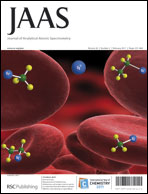High-precision isotopic analysis of boron by positive thermal ionization mass spectrometry with sample preheating
Abstract
We present a methodology for the precise and accurate analysis of boron isotope ratios (11B/10B) by positive thermal ionization


 Please wait while we load your content...
Please wait while we load your content...